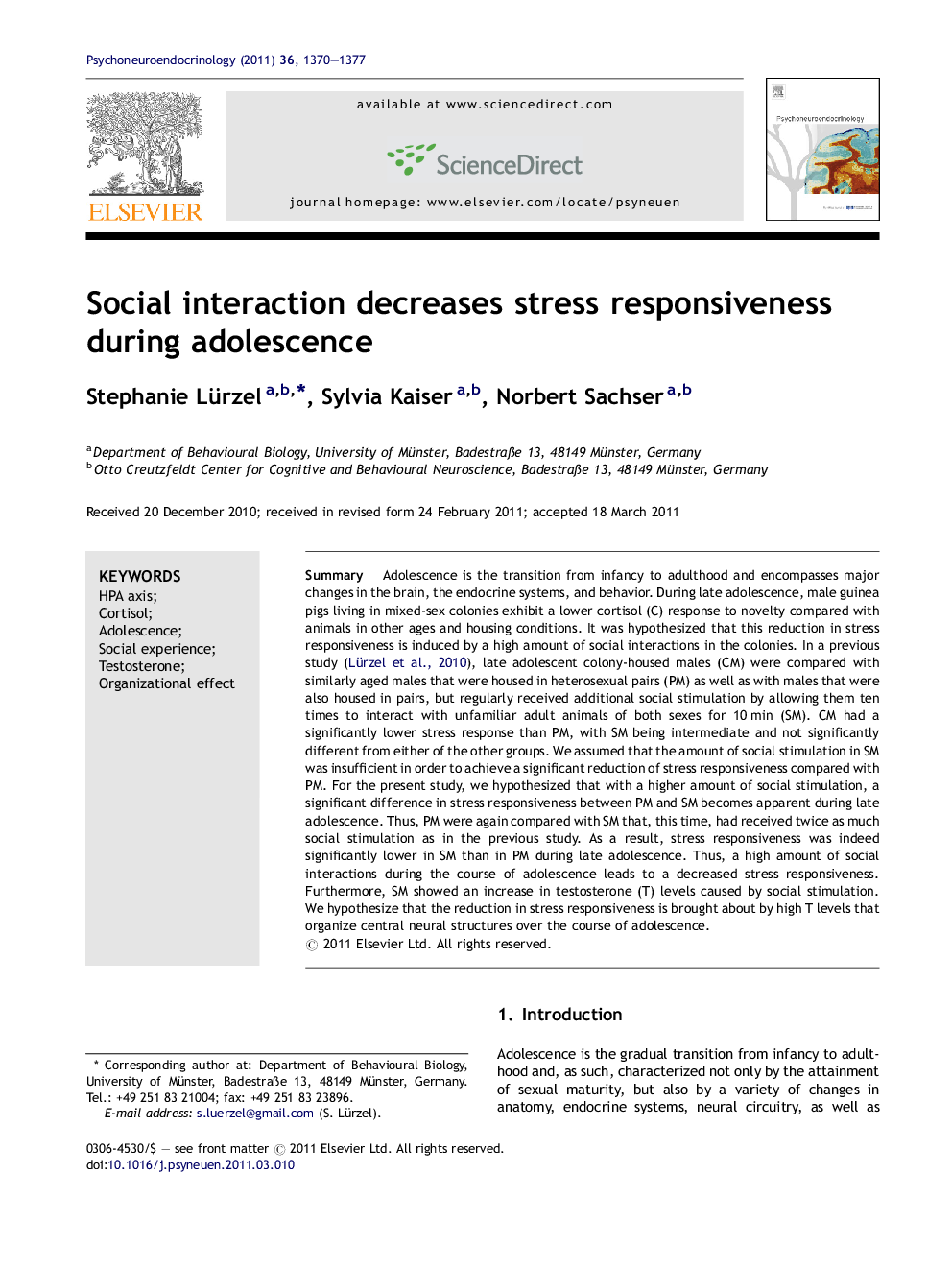| کد مقاله | کد نشریه | سال انتشار | مقاله انگلیسی | نسخه تمام متن |
|---|---|---|---|---|
| 10306396 | 547165 | 2011 | 8 صفحه PDF | دانلود رایگان |
عنوان انگلیسی مقاله ISI
Social interaction decreases stress responsiveness during adolescence
دانلود مقاله + سفارش ترجمه
دانلود مقاله ISI انگلیسی
رایگان برای ایرانیان
کلمات کلیدی
موضوعات مرتبط
علوم زیستی و بیوفناوری
بیوشیمی، ژنتیک و زیست شناسی مولکولی
علوم غدد
پیش نمایش صفحه اول مقاله

چکیده انگلیسی
Adolescence is the transition from infancy to adulthood and encompasses major changes in the brain, the endocrine systems, and behavior. During late adolescence, male guinea pigs living in mixed-sex colonies exhibit a lower cortisol (C) response to novelty compared with animals in other ages and housing conditions. It was hypothesized that this reduction in stress responsiveness is induced by a high amount of social interactions in the colonies. In a previous study (Lürzel et al., 2010), late adolescent colony-housed males (CM) were compared with similarly aged males that were housed in heterosexual pairs (PM) as well as with males that were also housed in pairs, but regularly received additional social stimulation by allowing them ten times to interact with unfamiliar adult animals of both sexes for 10Â min (SM). CM had a significantly lower stress response than PM, with SM being intermediate and not significantly different from either of the other groups. We assumed that the amount of social stimulation in SM was insufficient in order to achieve a significant reduction of stress responsiveness compared with PM. For the present study, we hypothesized that with a higher amount of social stimulation, a significant difference in stress responsiveness between PM and SM becomes apparent during late adolescence. Thus, PM were again compared with SM that, this time, had received twice as much social stimulation as in the previous study. As a result, stress responsiveness was indeed significantly lower in SM than in PM during late adolescence. Thus, a high amount of social interactions during the course of adolescence leads to a decreased stress responsiveness. Furthermore, SM showed an increase in testosterone (T) levels caused by social stimulation. We hypothesize that the reduction in stress responsiveness is brought about by high T levels that organize central neural structures over the course of adolescence.
ناشر
Database: Elsevier - ScienceDirect (ساینس دایرکت)
Journal: Psychoneuroendocrinology - Volume 36, Issue 9, October 2011, Pages 1370-1377
Journal: Psychoneuroendocrinology - Volume 36, Issue 9, October 2011, Pages 1370-1377
نویسندگان
Stephanie Lürzel, Sylvia Kaiser, Norbert Sachser,